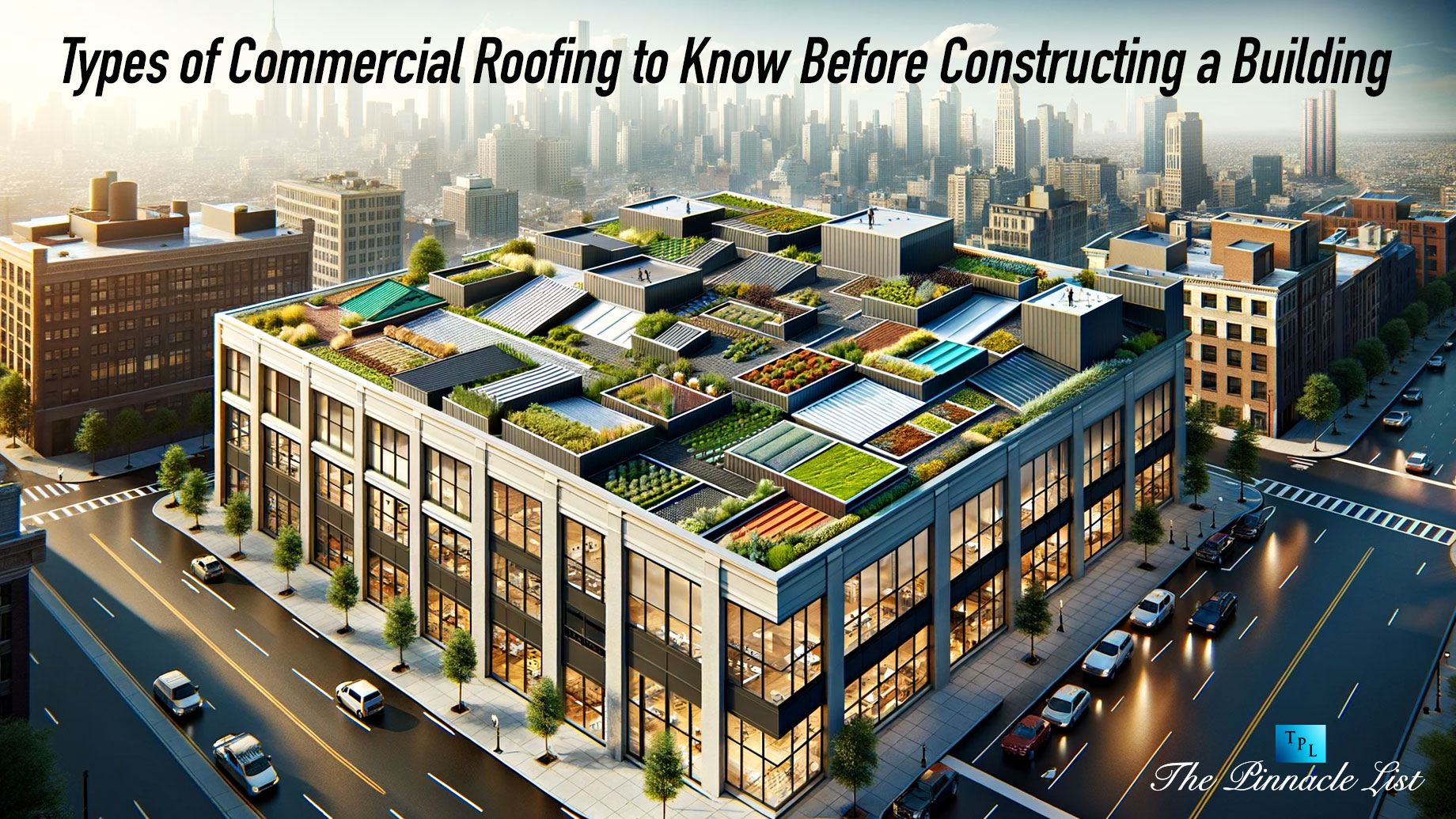
When constructing a commercial building, choosing the right roofing system is a critical decision that can impact the structure’s longevity, energy efficiency, and overall performance. Different types of commercial roofing materials offer various advantages and are suitable for different applications. Here are some common types of commercial roofing systems to consider.
Asphalt Shingle Roofing
An asphalt shingle roof is the most prevalent type seen in homes nowadays. It’s a roofing system primarily constructed with asphalt shingles and other asphalt roofing elements. There are three main types of asphalt shingles to choose from 3-tab, dimensional, and luxury.
- 3-tab asphalt shingles: These lie flat and are named for the three tabs on each strip of shingle.
- Dimensional shingles: These create an attractive, varied pattern or imitate the appearance of a wood shake roof.
- Luxury or premium shingles: These are larger than other types and are designed to resemble slate.
Single-Ply Roofing Membranes
Single-ply roofing refers to wide sheets designed for roofs with a low slope. Unlike asphaltic rolled roofs, single-ply roofs have fewer seams, reducing potential weak points. What’s advantageous is that they don’t need risky torches or hot asphalt during installation. Additionally, these roofs often come with pre-made accessories, simplifying the installation process. This has three different types of membranes:
- TPO (Thermoplastic Olefin): TPO roofing is known for its durability, energy efficiency, and resistance to UV rays. It is a single-ply membrane that can be mechanically attached, fully adhered, or ballasted.
- PVC (Polyvinyl Chloride): PVC roofing is another single-ply option known for its chemical resistance and fire-retardant properties. It is often used in restaurants and industrial facilities.
- EPDM (Ethylene Propylene Diene Monomer): EPDM is a rubber-like roofing material that is resistant to ozone, UV radiation, and extreme temperatures. It is often used in low-slope roofing applications.
Built-Up Roofing
Built-Up Roofing, abbreviated as BUR, originated in the mid-1800s. This roofing system involves applying several layers of asphalt between ply sheets or felts over the roof deck and insulation. BUR systems are highly effective in various geographic areas and climates. These roofs were the initial type of “flat” roofs used in construction in older times.
Modified Bitumen Roofing
Modified Bitumen (mod bit) roofing systems have become a popular and efficient solution for commercial properties with flat or low-slope roofs. Serving as a cost-effective alternative to traditional Built-Up Roofing (BUR) systems, Modified Bitumen has gained industry favor. This roofing material was developed to enhance built-up roofing systems. It is a hybrid that blends asphalt membranes with polymerized rubber or plastic and reinforces it with fiberglass, resulting in a durable yet flexible roofing solution.
Metal Roofing
A metal roof is a roofing system made up of metal pieces or tiles that are resistant to corrosion, impermeable to water, and have a long lifespan. As also highlighted by the experts in the industry like Atlanta Commercial Roofing, it plays a crucial role in the building envelope while also being a cost-effective option. These metal pieces may serve as a covering on a structural roof that isn’t waterproof on its own, or they can be independent, self-supporting sheets. Metal roofing is known for its durability and versatility, offering a wide range of styles, making it a popular choice for both residential homes and commercial properties.
Green Roofing Systems
A green roof system is an extension added to the existing roof of a building, and it typically includes high-quality waterproofing, a system to repel roots, drainage mechanisms, filter cloth, a lightweight growing medium, and plants.
These green roof systems can be either modular, where components like drainage layers, filter cloth, growing media, and plants are pre-prepared in movable and often interlocking grids, or they can be loosely laid or built up, where each part of the system is installed separately.
Cool Roof Coatings
A cool roof is created to reflect more sunlight compared to a regular roof, absorbing less solar energy. This helps in reducing the building’s temperature, similar to how wearing light-colored clothes keeps you cool on a sunny day. The benefits include energy and cost savings for air-conditioned buildings, and for those without air conditioning, it enhances comfort and safety by minimizing heat transfer from the roof into the occupied space. While almost any building type can benefit from a cool roof, it’s essential to consider the climate and other factors before deciding to install one.
To Sum It Up
The choice of commercial roofing is a pivotal decision during the construction of a building, influencing its durability, energy efficiency, and overall performance. The diverse range of roofing materials, such as asphalt shingles, single-ply membranes, built-up roofing, modified Bitumen, metal roofing, green roofing systems, and cool roof coatings, offers distinct advantages suitable for various applications. Each roofing type offers unique benefits, making it crucial to align the choice with the specific needs and conditions of the project.